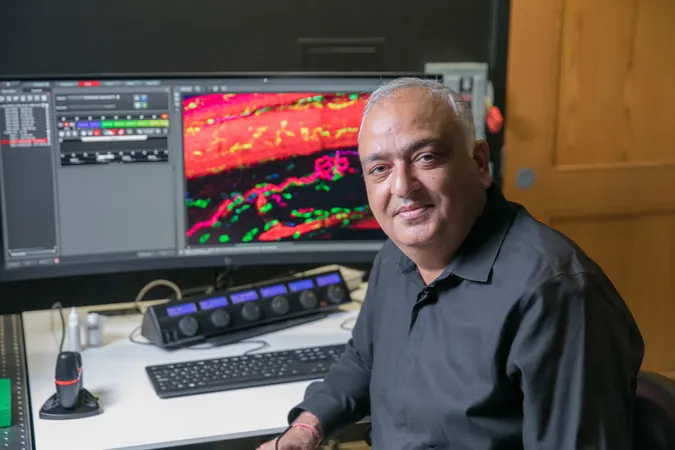
Revolutionary Robot Technology: Machines Can Now Identify Objects by Touching Them!
2025-05-12
Author: Jia
Unlocking the Secrets of Objects with a Gentle Shake
Imagine a robot that can determine the weight, softness, and contents of a box just by picking it up and giving it a shake—much like a human would! Researchers at MIT, in collaboration with Amazon Robotics and the University of British Columbia, have developed a groundbreaking technique that allows robots to mimic this ability.
Using solely internal sensors, this innovative system empowers robots to quickly assess key object parameters within seconds, without relying on external tools or visual input. This low-cost method could revolutionize settings where traditional cameras fail, such as amidst rubble in disaster zones or in dark basements.
How It Works: A Deeper Dive
At the heart of this robotic advancement is a sophisticated simulation process. By creating models for both the robot and the object, researchers can accurately identify an object’s characteristics as the robot interacts with it.
The researchers claim that their technique rivals more complex and expensive systems that utilize computer vision, allowing for reliable performance even in unanticipated scenarios. As Peter Yichen Chen, an MIT postdoc and lead author, puts it, 'We are just scratching the surface of what a robot can learn through touch!'
Sensing with Precision: Proprioception in Action
The technology leverages proprioception—the ability to sense one’s position and movement in space. Just as a human can feel the weight of a dumbbell through their arm muscles, a robot senses the weight of an object through its arm joints.
The system gathers precise data from the robot’s joint encoders—sensors that track rotational position and speed—making it more cost-effective than alternatives that require additional gadgets like tactile sensors.
Fast and Efficient: Differentiable Simulations
Employing a technique called differentiable simulation, the researchers’ algorithm analyzes how slight changes in an object's characteristics influence the robot's movements. Once the simulation aligns with the robot's actual actions, the system accurately pinpoints the object’s properties within seconds.
Whether assessing mass, softness, or even viscosity of substances, this method does not depend on a vast dataset and is less prone to failure in unfamiliar environments.
A Glimpse into the Future of Robotics
Looking ahead, the research team aspires to combine their touch-based system with computer vision for even smarter robots while also wanting to explore complex robotic applications involving soft materials and sloshing liquids.
In a world where robots can learn independently and adapt seamlessly to their surroundings, this technique paves the way for advancements in robotic manipulation skills, making them indispensable companions in our daily lives.
Join the Robotic Revolution!
This remarkable breakthrough not only enhances our understanding of robotics but also represents a significant leap towards robots that can autonomously analyze their environment. As industry experts like Miles Macklin from NVIDIA highlight, this research could redefine the future of object interaction and classification in robotics. Get ready—your friendly neighborhood robots may soon be more skilled than you think!





 Brasil (PT)
Brasil (PT)
 Canada (EN)
Canada (EN)
 Chile (ES)
Chile (ES)
 Česko (CS)
Česko (CS)
 대한민국 (KO)
대한민국 (KO)
 España (ES)
España (ES)
 France (FR)
France (FR)
 Hong Kong (EN)
Hong Kong (EN)
 Italia (IT)
Italia (IT)
 日本 (JA)
日本 (JA)
 Magyarország (HU)
Magyarország (HU)
 Norge (NO)
Norge (NO)
 Polska (PL)
Polska (PL)
 Schweiz (DE)
Schweiz (DE)
 Singapore (EN)
Singapore (EN)
 Sverige (SV)
Sverige (SV)
 Suomi (FI)
Suomi (FI)
 Türkiye (TR)
Türkiye (TR)
 الإمارات العربية المتحدة (AR)
الإمارات العربية المتحدة (AR)